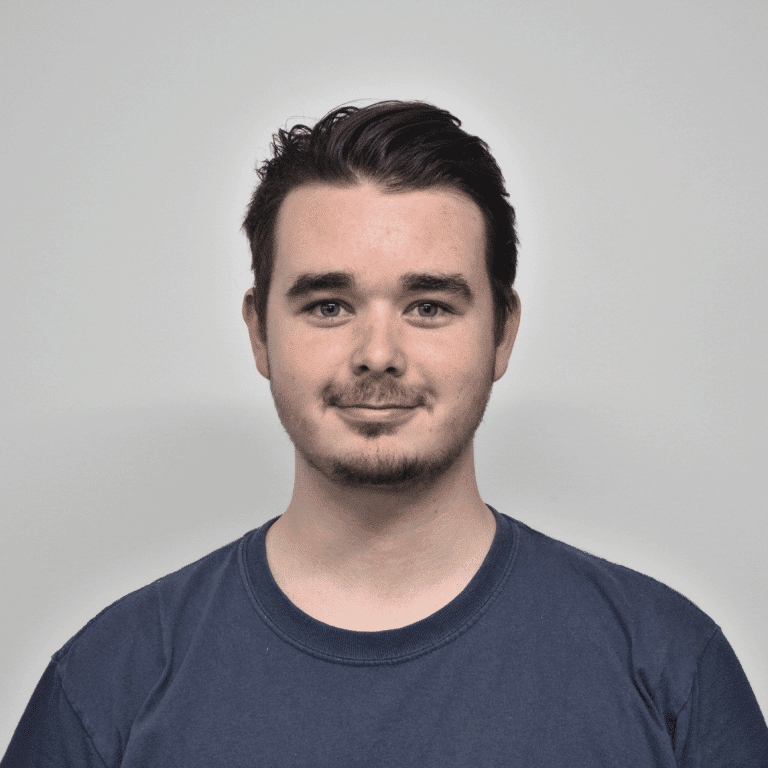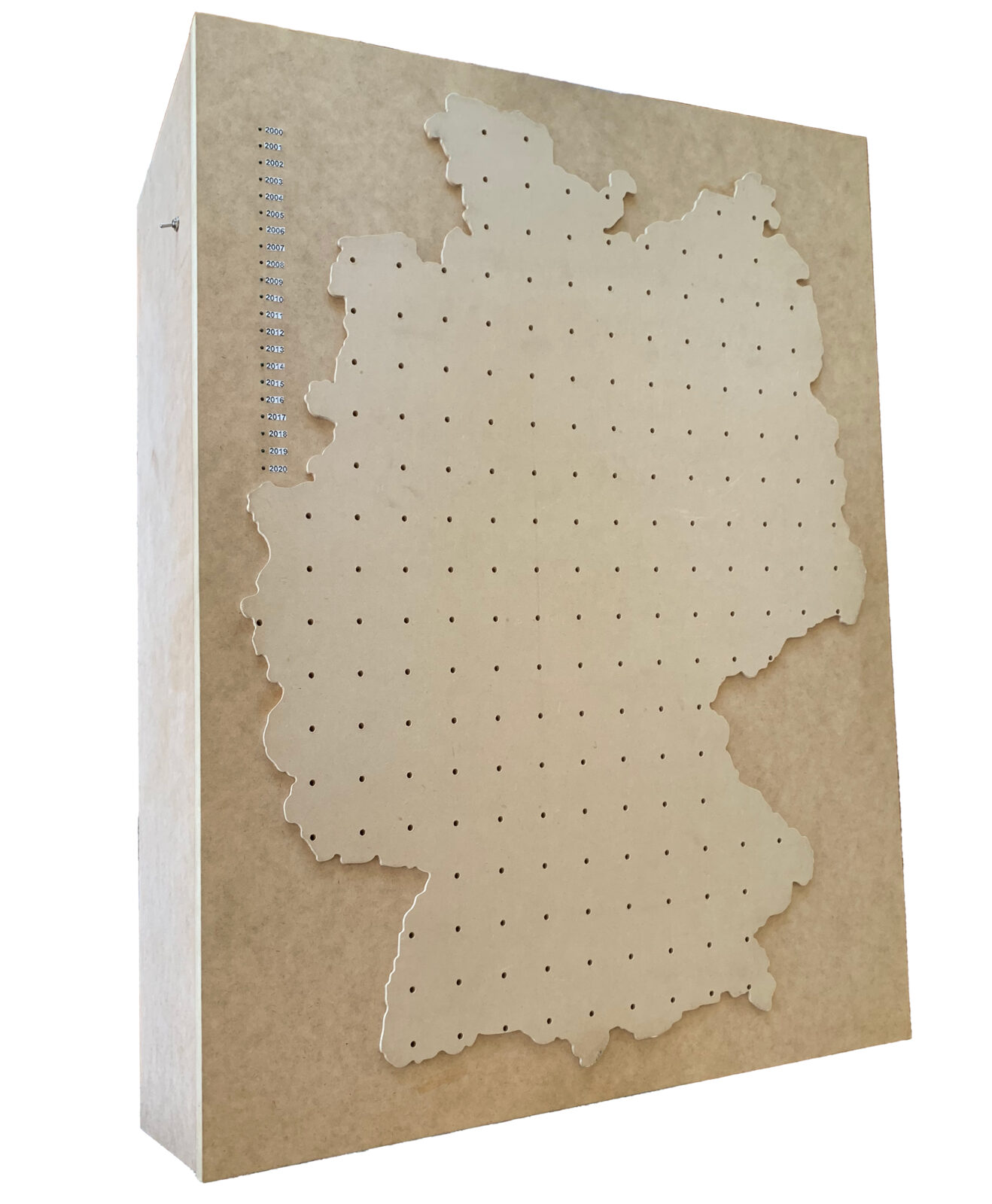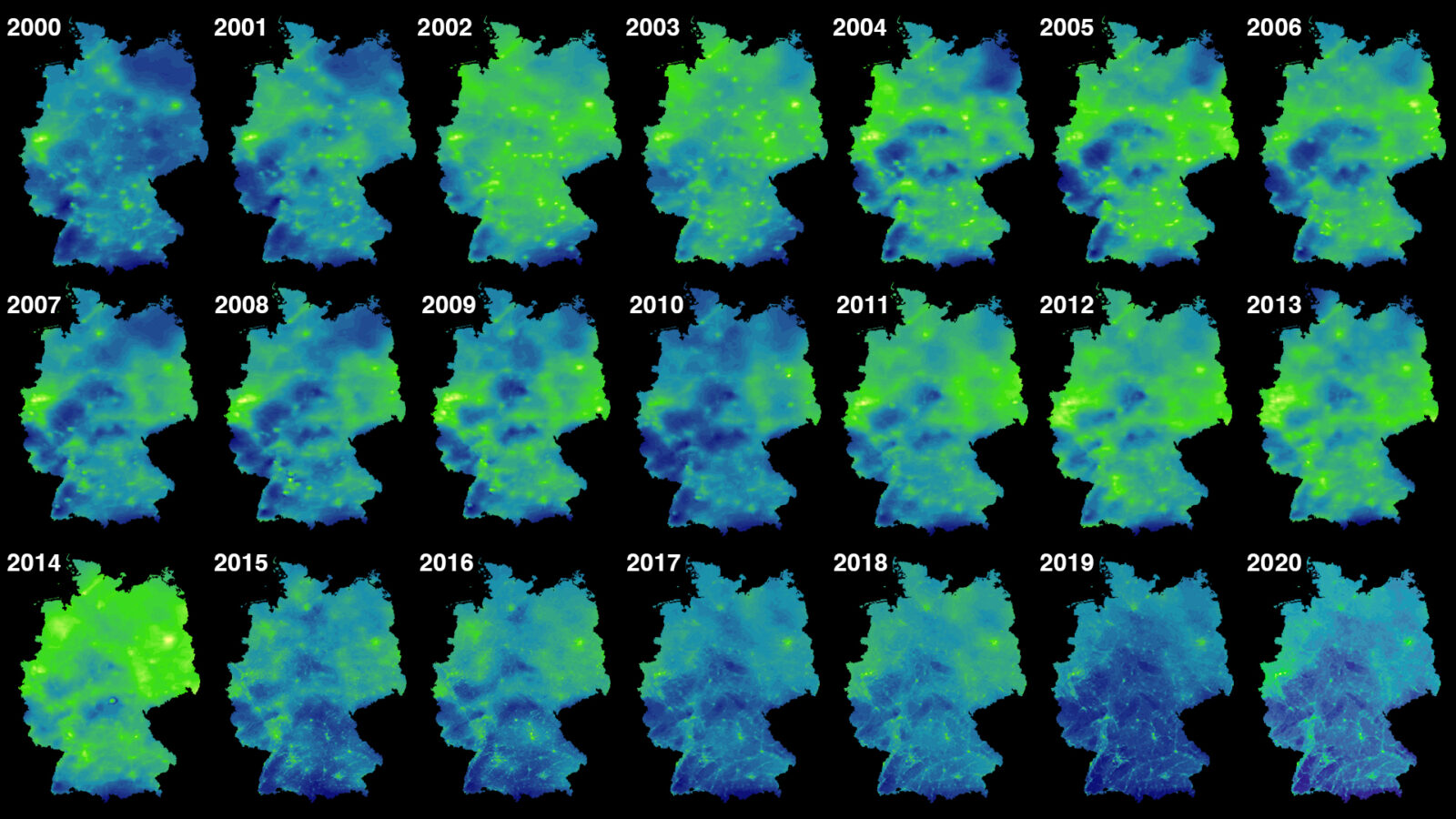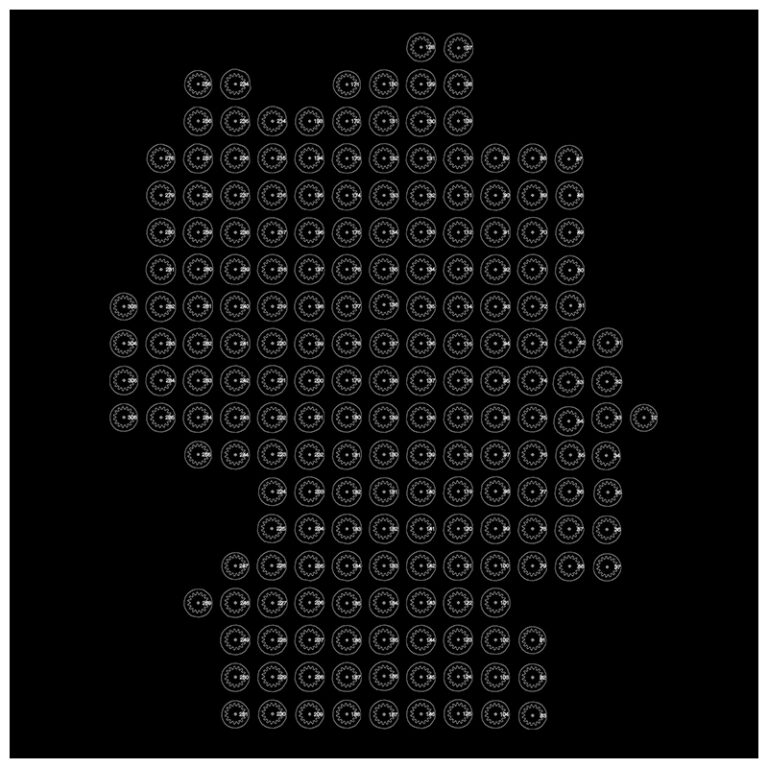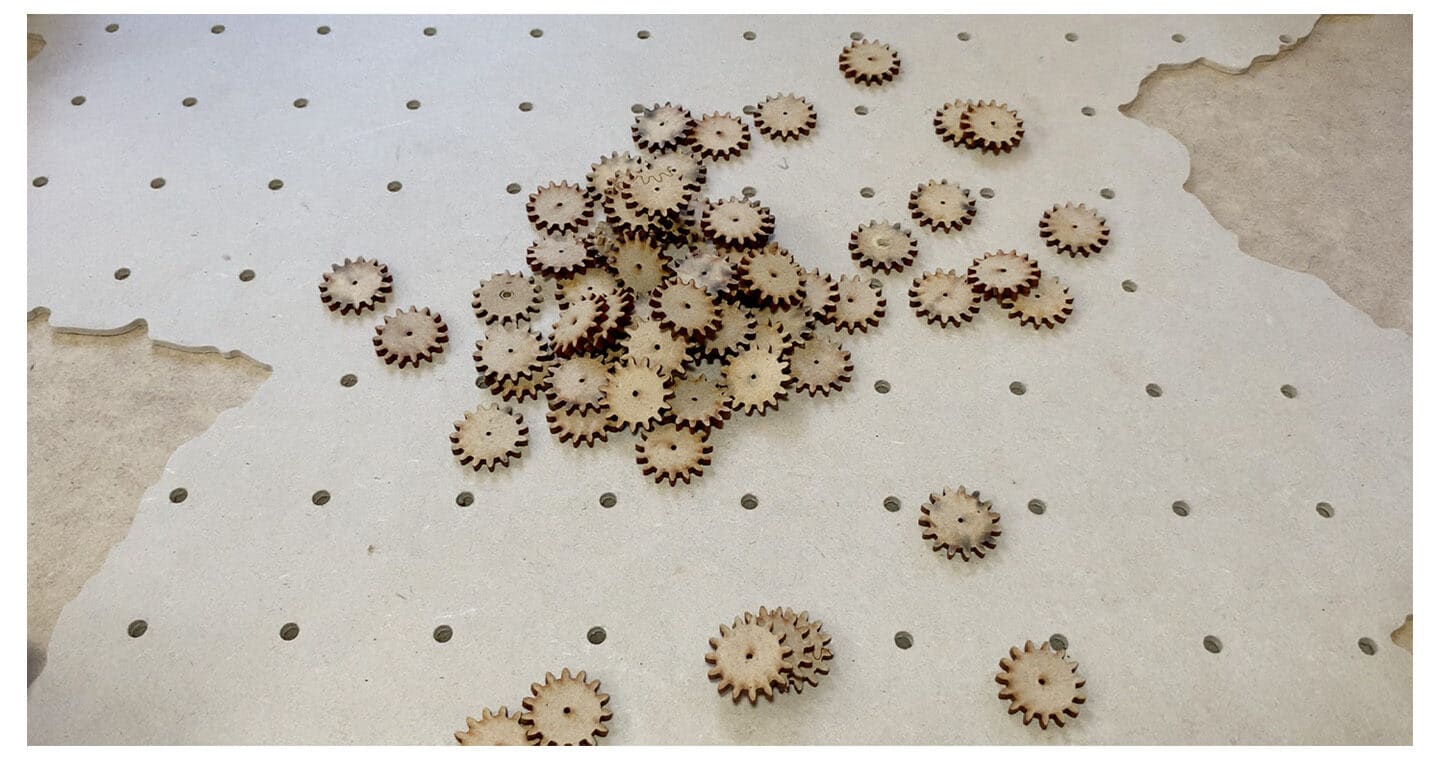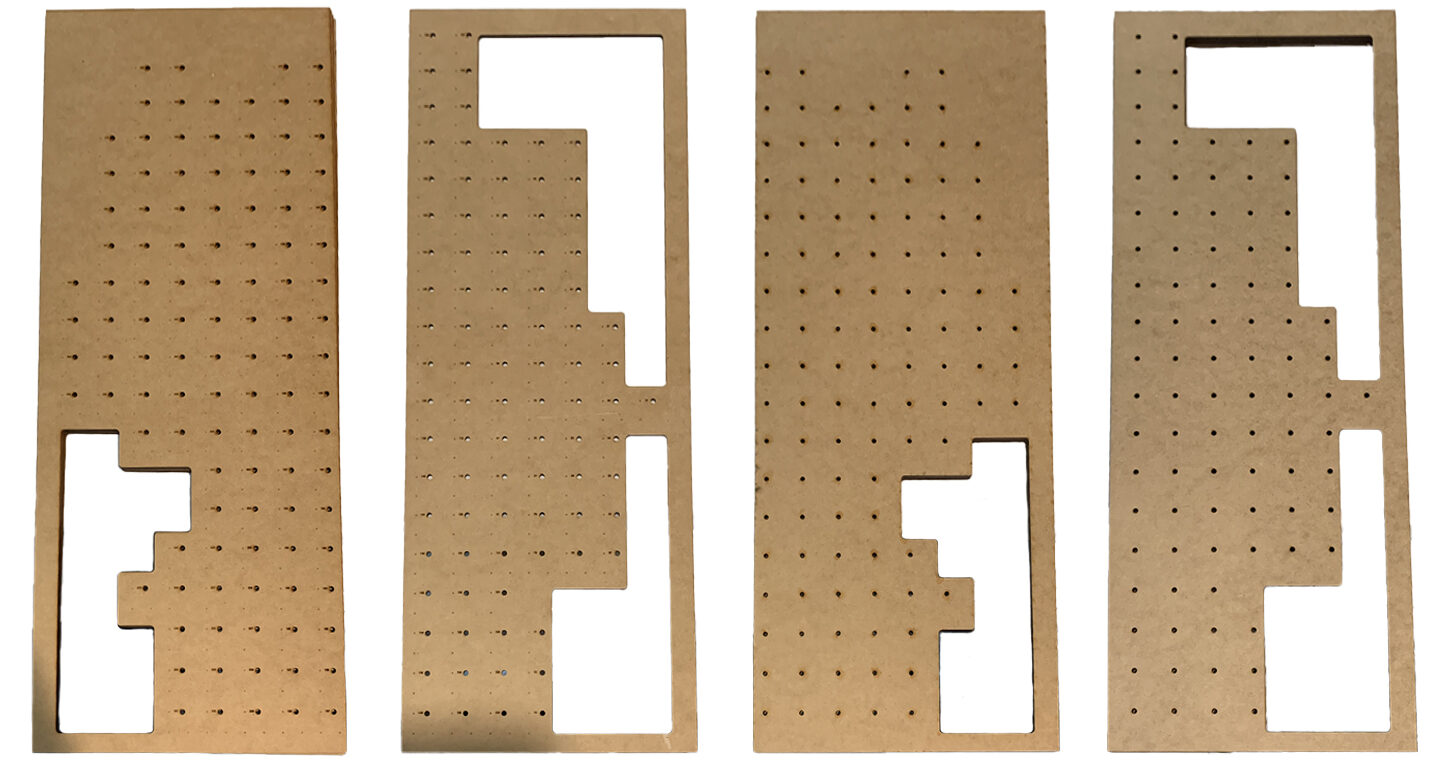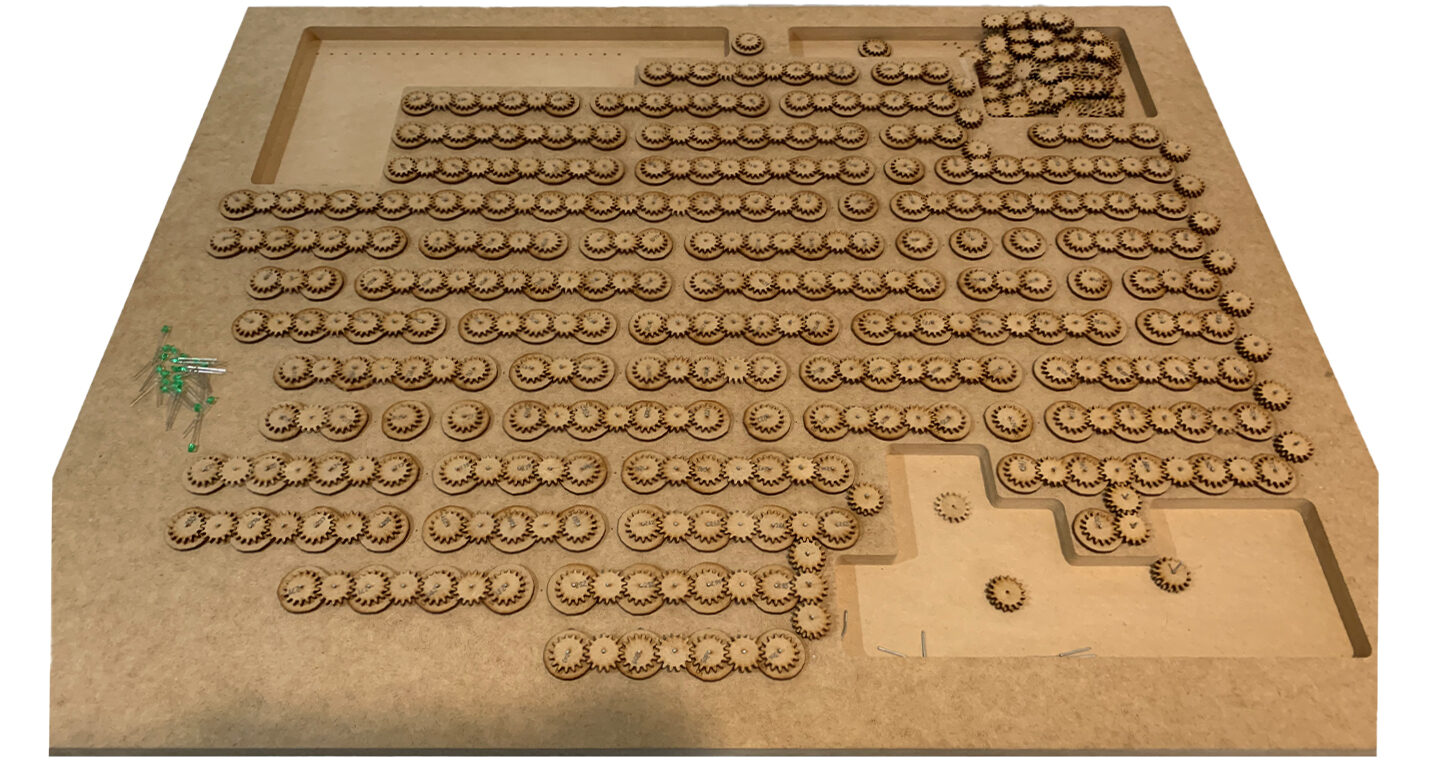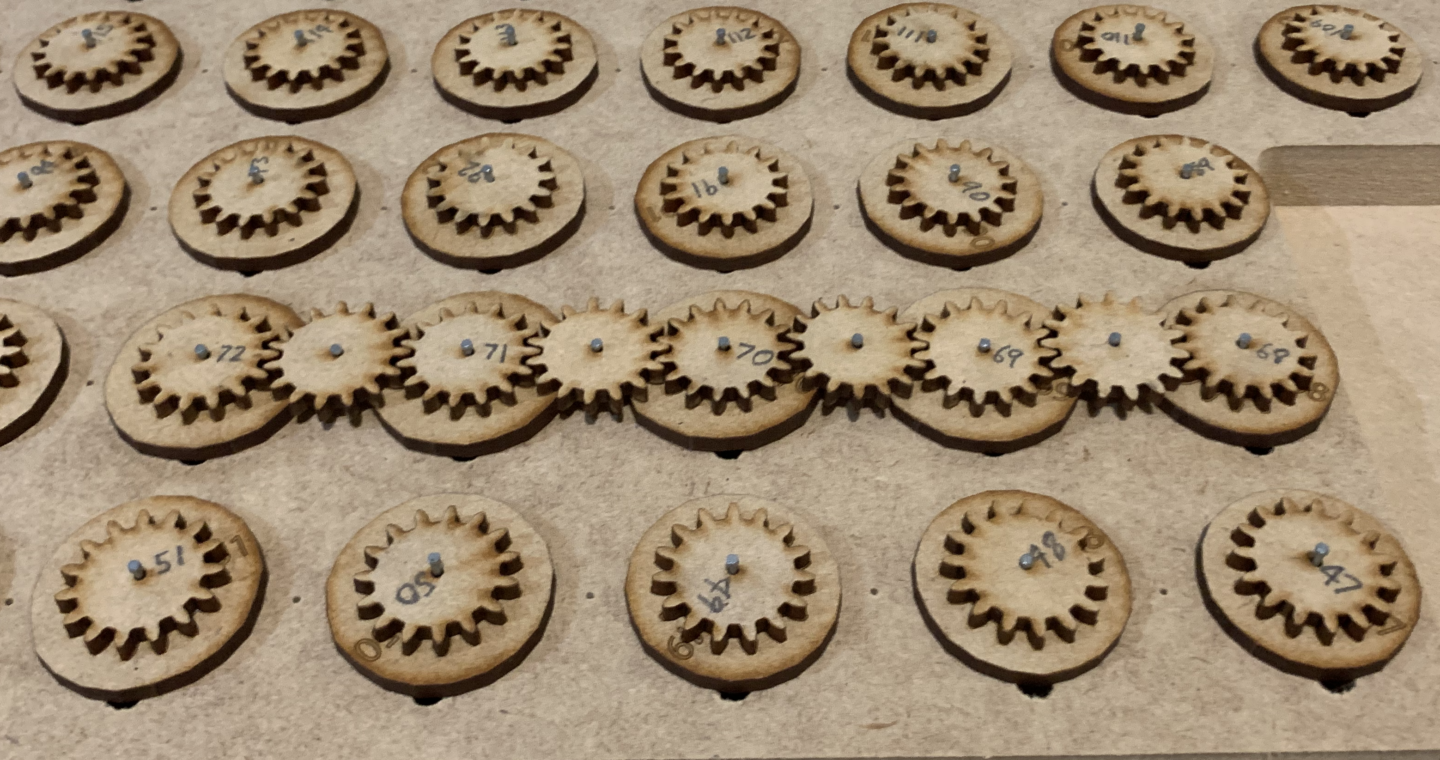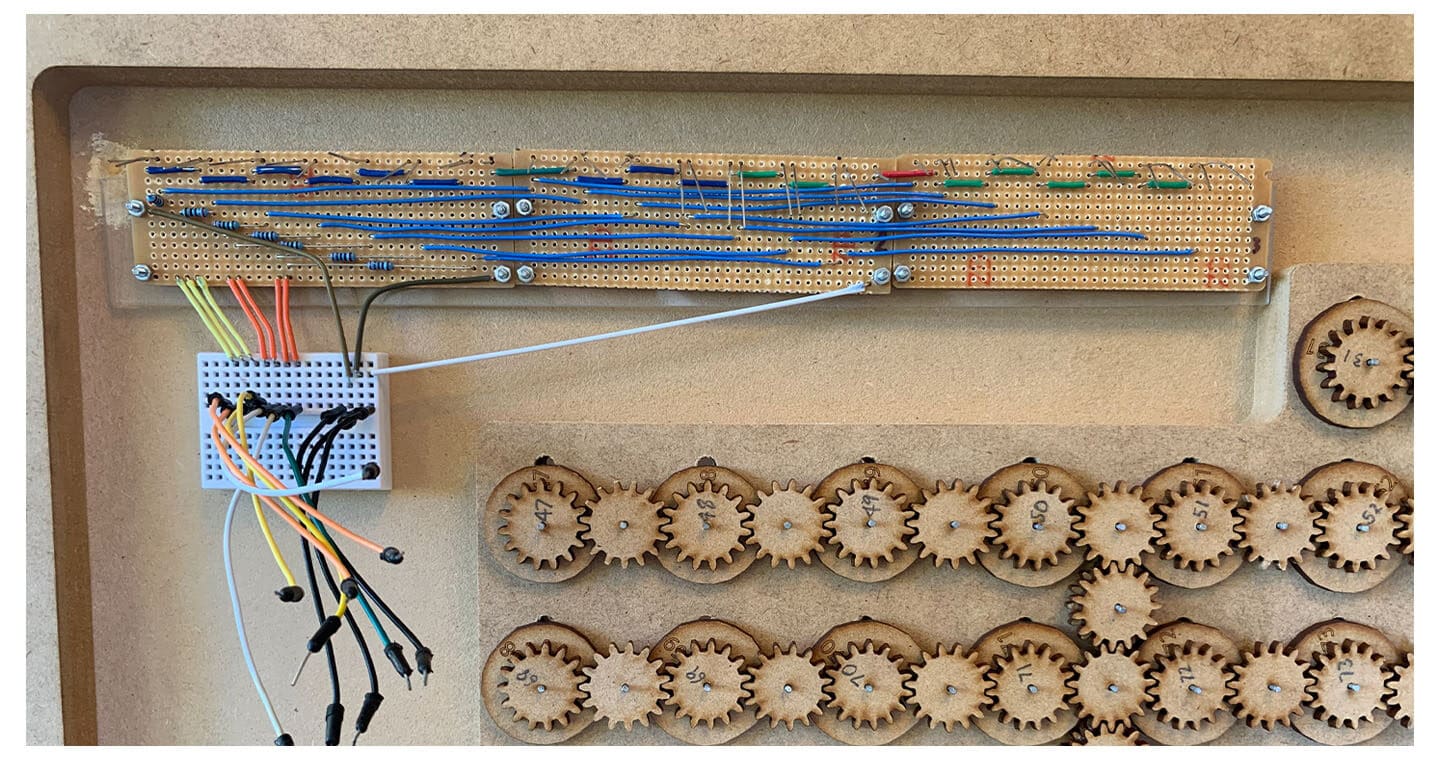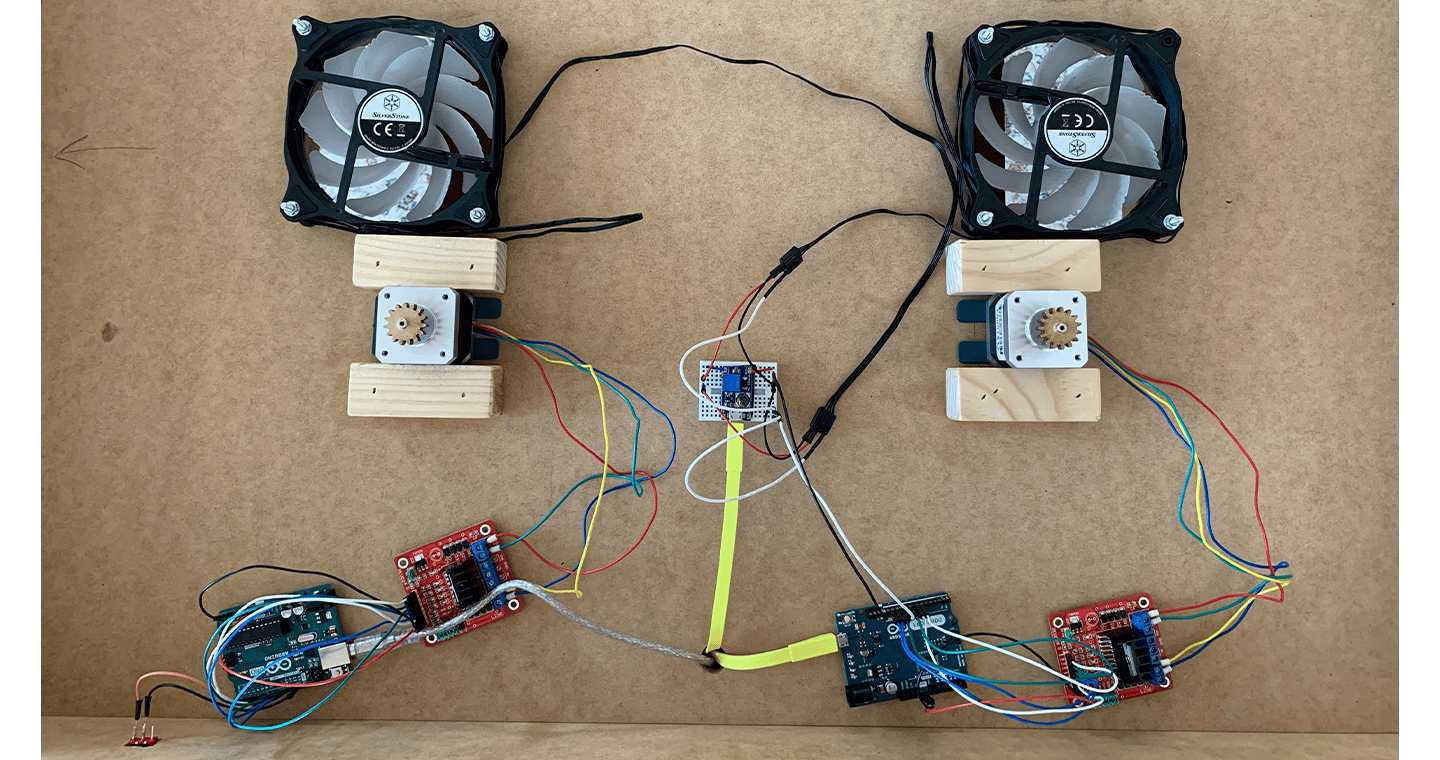Design Statement
Particles Matter tells a story of the past 21 years of air pollution in Germany. A story of increases and decreases in pollution, ultimately showing an effective decrease over time. Particles Matter is an interactive experience where the user hovers their hand over the map of Germany, feeling the airflow through the holes. Particles Matter intends to create a playful experience by taking the user out of their comfort zone, presenting data in an unusual format. The project name is derived from this data which is a measure of particle matter in the air. While traditional data visualisation helps the user to visualise the data, Particles Matter intends for the user to feel connected to the data through a new experience. Here air pollution is represented through the rate of airflow at various points along a grid within Germany. Under the map, a series of gears created using the air pollution data from 2000 to 2020, slowly turns, covering and uncovering the holes. This allows the data – the airflow – to cycle through the years allowing the air itself to tell a story.
Particles Matter tells a positive story of air pollution reduction through turning data visualisation into a playful experience. Here the participant feels, with their own tactile senses, the true importance that the data conveys.
Design Concept Video
Final Concept Images
Development
The project was developed over 11 weeks with eight stages.
Initial development began with acquiring detailed data of air pollution over a timespan. It was found that PM10 air pollution data from Germany’s Federal Environment Agency was highly informative and contained information over 21 years.
With the laser cutter file developed all the disks and gear were cut and glued together.
The top board consisting of the air holes was then designed. The top board consisted of two separate boards connected. A board in the shape of Germany with air holes, would be glued to another board consisting of air holes, pockets for additional space, holes for LEDs and small guide holes for ease in location of disk placement. Both parts of the board were created using a CNC machine.
The top board went through several iterations before finalisation. This included experimentations with laser cutting, use of different materials, different painting techniques and etching.
After development of the top board, the gears were attached to their respective positions along the grid of guide holes.
The box providing the two chambers was then constructed. Within the box a shelf was installed to hold another board creating the two chambers. This was simply a board with two large holes for two computer fans and eight holes for bolting the fans onto the board.
The most intensive stage was assembling the electronics. The electronics had several components, consisting of the LED matrix, stepper motors, computer fans, and the projector, all controlled by a switch.
The LED matrix was constructed of three Vero board strips bolted onto a single clear strip of acrylic. 21 LEDs, 7 resistors, 32 wires and 7 connection wires were soldered onto the Vero boards to make up the matrix. The matrix is controlled via an Arduino Leonardo.
The computer fans are powered via a voltage step up module connected in parallel to the two fans. Both fans are controlled by the Arduino Leonardo’s PWM pin.
The stepper motors are each connected to a stepper motor controller which is in turn connected to an Arduino.
With each area of the design concept complete it was then able to be incorporated into the single experience.


